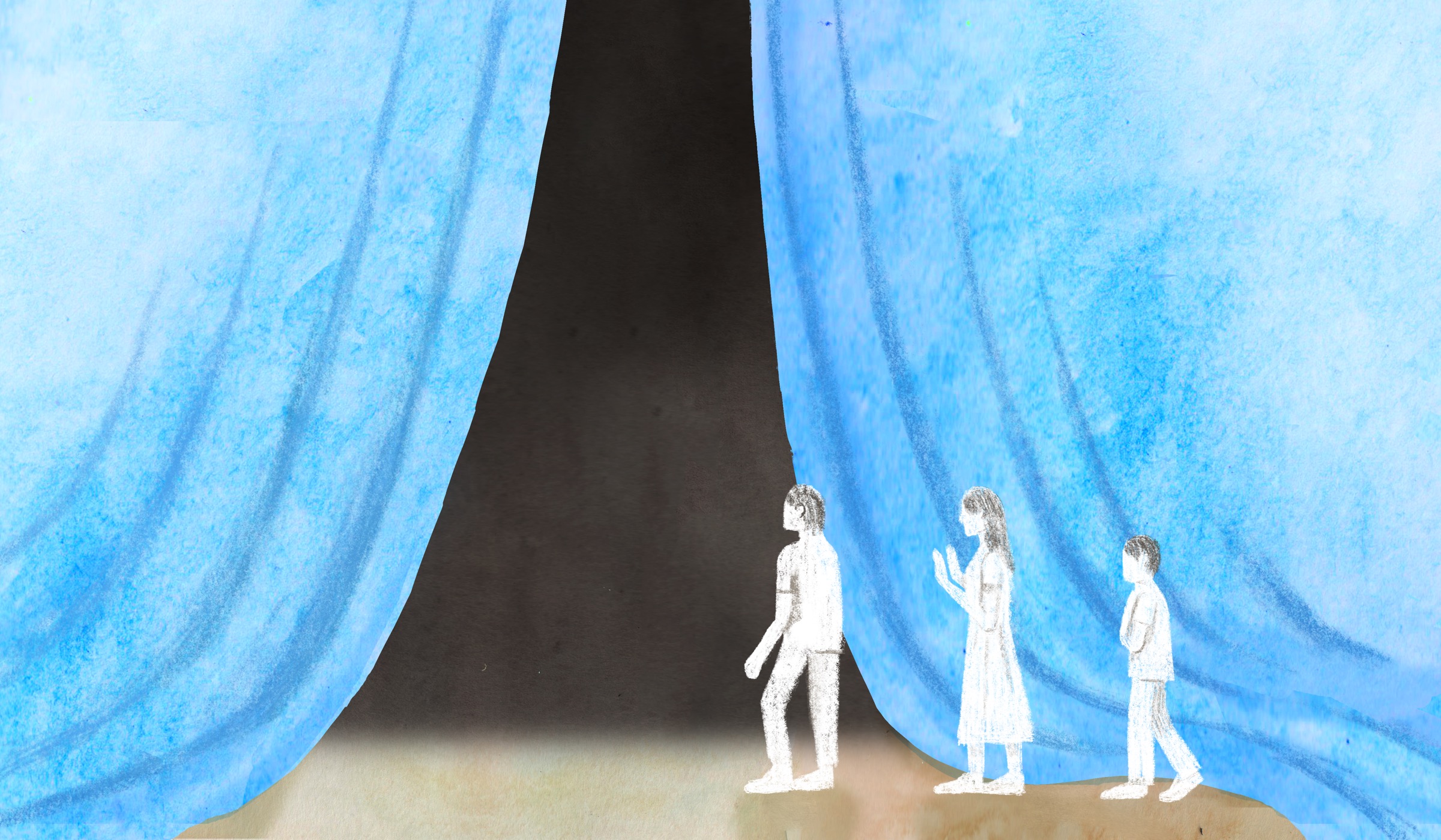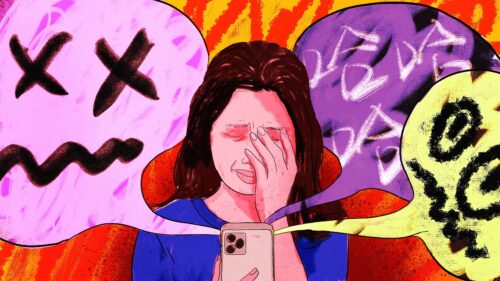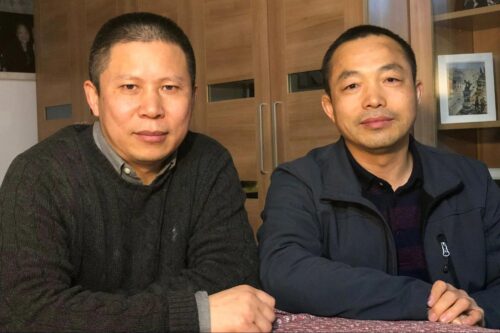Right-to-die in China: A landmark first step, with challenges ahead
In July, Shenzhen became the first mainland Chinese city to pass a law that allows patients the right to refuse “excessive life-saving treatment.” But the drive for widespread implementation of this “right-to-die” legislation faces cultural and societal hurdles.

Wang had told his wife that he did not want to be resuscitated nor intubated under any circumstance. A 57-year-old Beijinger and martial arts practitioner, Wang had ended his career early due to myotonic dystrophy, a condition with progressive muscle wasting and weakness that begins in adulthood. The physical symptoms were manageable through painkillers, but the sheer monotony of his day-to-day life exasperated him.
It was during a typical medical check-up that Wang underwent cardiac arrest. The medical team resuscitated him, but he suffered from irreversible brain damage, leaving him with a very slim chance of regaining consciousness. As the family processed the news, the doctor asked them to sign a consent form that would have granted retroactive permission for Wang’s life-sustaining treatments. This upset Wang’s son, who wanted to uphold his father’s wish to hold onto a semblance of his sense of self after a long battle with a debilitating condition.
In China, many patient stories echo Wang’s experience of navigating a medical system that typically values curative treatment and longevity over dignity and quality of life. This is a gap that “right-to-die” legislation, like a new law in Shenzhen that takes effect next year, could begin to fill.
Shenzhen’s landmark right-to-die law
In July, Shenzhen became the first city in mainland China to pass legislation that honors the living wills of critically ill patients to refuse excessive life-sustaining treatments. (Not to be confused with euthanasia, i.e., the taking of one’s own life with assistance, which remains illegal.) Meanwhile, across Asia, right-to-die legislation exists in places like Singapore, Taiwan, and South Korea.
China news, weekly.
Sign up for The China Project’s weekly newsletter, our free roundup of the most important China stories.
In China, the concept of a living will, a type of advance directive, was first introduced in 2006. At Beijing Living Will Promotion Association, the main organization in China that offers living wills (though not legally binding outside of Shenzhen), only 50,000 people — roughly 0.005 percent of the adult population — have created a living will in the last two decades. In the U.S., living wills emerged more than 50 years ago, and today, about 45 percent of American adults have a living will.
While the Shenzhen law is a major milestone, it is not a sweeping rule that requires health providers to offer living wills to relevant patients. It merely forces hospitals to abide by previously drafted living wills. According to a professor in Beijing, the legislation lacks the proper incentives for health providers to offer living wills and corresponding services. By contrast, in the U.S., the federal law on advance directives is clearly written to compel healthcare providers that receive Medicare or Medicaid funding to give patients information about formulating advance directives.
The Shenzhen law’s power and its impact on future right-to-die decisions across the nation will rest on the success of its implementation. In the past year, a group of Chinese researchers interviewed more than 200 healthcare professionals and family members across China on the country’s current state of end-of-life care. These interviews suggest that challenges are expected with local — and perhaps, over time, national — adoption of the right to die.
In practice, Shenzhen’s right-to-die contract is intended for palliative care patients, which limits the legislation’s purview since end-of-life care remains underdeveloped in China, despite the country’s rapidly aging population and growing burden of disease. In the days, weeks, or months leading up to end of life, the prevailing practice is either over-medicalization or the marginalization of patients whose death can no longer be delayed with medical interventions. In both scenarios, patients are often reduced to their physiological functions.
Death in contemporary Chinese culture
Deng, an 86-year old farmer from the Sichuan countryside, committed suicide after extreme suffering in his final days. China has one of the highest elderly suicide rates in the world, at 9 per 100,000 people, behind only the U.S. and Japan. In China, the suicide rate is seven times higher among its senior population compared to the rest of the population, and higher in rural areas.
Without adequate care, Deng’s chronic pancreatitis devolved into late-stage pancreatic cancer. His children opted to hide their father’s diagnosis, but Deng eventually found out by comparing his CT scan with those of other patients in the oncology ward. There were many noticeably white spots on his film.
After a week-long stay in the hospital, the doctor said there was nothing else the hospital could do for him. Back in the village, Deng’s post-discharge life initially merged with the rhythm of his old routine, but his pain returned — so intense that it triggered him to jump off a cliff in the middle of the night. Trees caught his frail body halfway, though they could not stop another suicide attempt. The following morning, Deng’s wife found his body slumped over in a pool of blood, with cuts on his wrists and ankles. The cancer was unforgiving, and without any end-of-life support, it had stripped every ounce of Deng’s pride.
A growing number of palliative care physicians note that the coordinated effort between the physician and the family to hide a diagnosis from a patient is a “waste of time.”
The interviews with healthcare professionals and patients’ families also highlight the major role family members, typically adult children, play in end-of-life decision-making, as one’s death is not just about an individual, but a family affair.
Gao, a rural farmer from Gansu province, was in his 50s when he was diagnosed with late-stage esophageal cancer. Based on Gao’s prognosis, the doctor informed the family that Gao should go home to rest and “wait for death.” However, his younger brother insisted on surgery to prolong his life, as well as to “do his filial piety.”
Filial piety remains a core value in Chinese society and extends to all corners of individual and social life, including end-of-life care. It not only motivates decisions like Wang’s son wanting to fulfill his father’s wish, but also underpins some families’ decisions to choose life-sustaining treatments for their dying loved ones, even when they may lead to more suffering than benefits. One palliative care worker noted that many family members believe their loved one’s longevity proves their filial piety to others, that “at least he’s alive and living proves this family is trying.”
In Gao’s case, the operation was unsuccessful, and he spent the final days of his life hunched over in bed in extreme pain, his sheets ripped up. He was reduced to 32 kilograms in weight by the time of his passing.
Balancing family-centered decision-making and patient-centered right-to-die is tricky, as family-centeredness is deeply embedded in the culture. The interviews reveal that most doctors hesitate to make final decisions and instead adhere to those of family members. The right-to-die legislation, in circumstances like this, can help reduce occupational risks for doctors as they support patient wishes that may go against those of the family.
It also remains common for families to hide serious diagnoses from patients to “protect” their loved ones from the truth. This, in part, stems from death still being a taboo topic in Chinese society at large. “The common people’s awareness of death needs to be popularized or publicized to establish a correct outlook on life and death,” a palliative care physician said.
Physicians generally respect the family’s request to hide diagnoses. However, patients cannot claim their right to die when they do not have full access to their medical information. A growing number of palliative care physicians have been frustrated by this, noting that the coordinated effort between the physician and the family to hide a diagnosis is a “waste of time,” according to one doctor. “We should be able to say anything. This kind of mutual temptation is exhausting.”
What’s viable in the future?
In China, an argument against end-of-life-care reforms has been that they are largely Western concepts that are not culturally suited for the country. But there are lessons that can be learned from Singapore and Taiwan, places with similar sociocultural values and aging and disease profiles.
Singapore has launched a series of “death education” initiatives to inform the public about what it means to die well. Various campaigns include TV and cinema advertisements, radio talk shows, newspaper articles, social media posts, and roadshows in the neighborhoods. These campaigns highlight patient-focused decision-making that can still take place in a family-centric environment. In Taiwan, Advance Care Planning (ACP) clinics have been launched across the island, following its Patient Right to Autonomy Act. One pilot study tailored ACP to the Taiwanese context to ensure the family’s involvement while improving the patient’s understanding of end-of-life care by designing educational resources and launching communication coaching for both the patient and his or her family members.
The current state of end-of-life care shows how complex implementing the right to die will be, and that beyond guaranteeing the right, there should be an overarching practice of providing a more compassionate, patient-focused model of care and restoring dignity and comfort amid our shared fragility at the end of life.
Gao did not know he had cancer until two weeks prior to his passing. His family chose not to inform him until the end, believing that it would be too difficult to accept cancer at his age. Instead, they took him on his first-ever flight to visit Xi’an for 20 days with family as the final parting gift. One of the last things Gao said to his family was, “I wish you had told me the truth earlier.”
Patient and interviewee names were either anonymized or pseudonymized in this story to protect their privacy.






